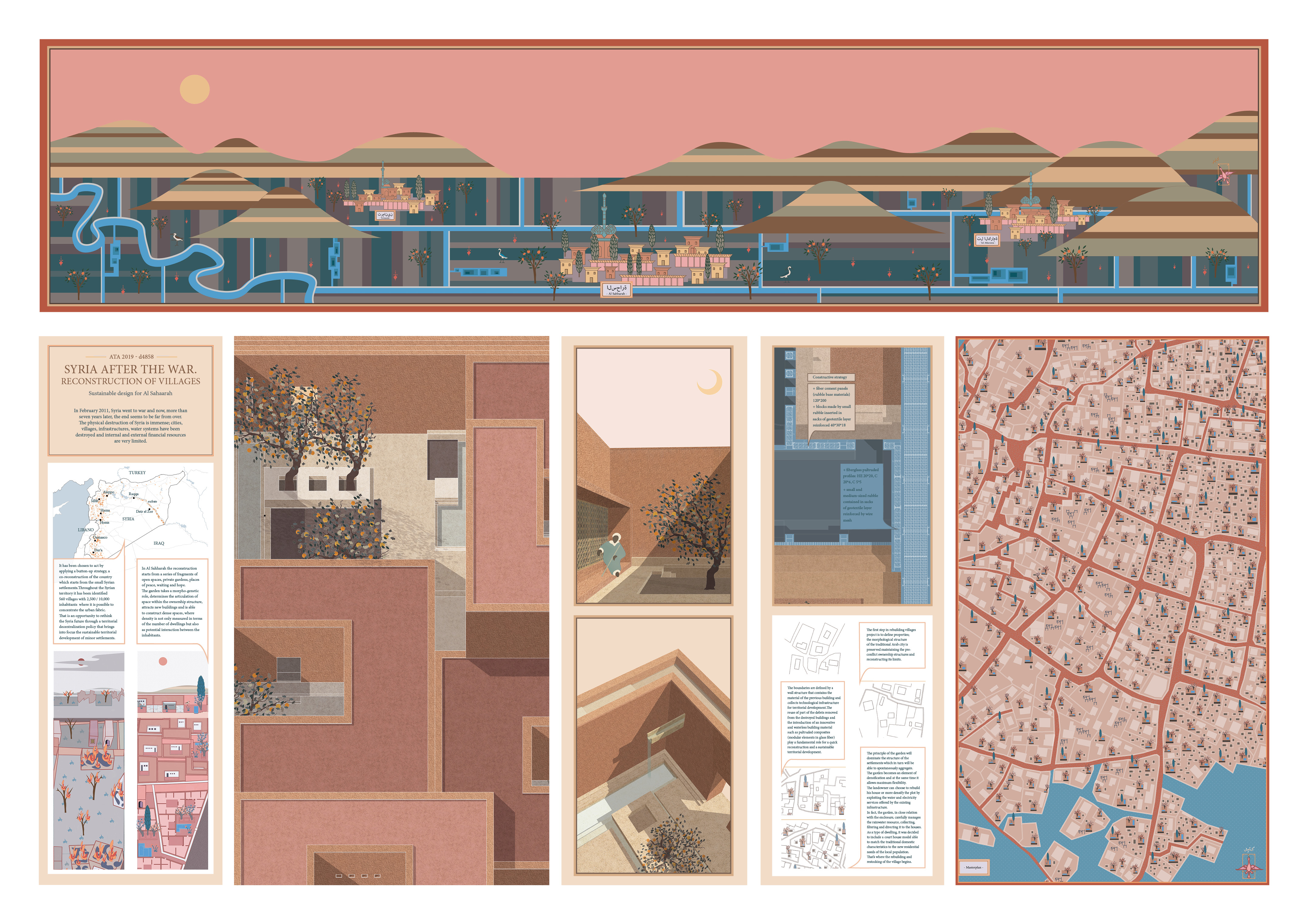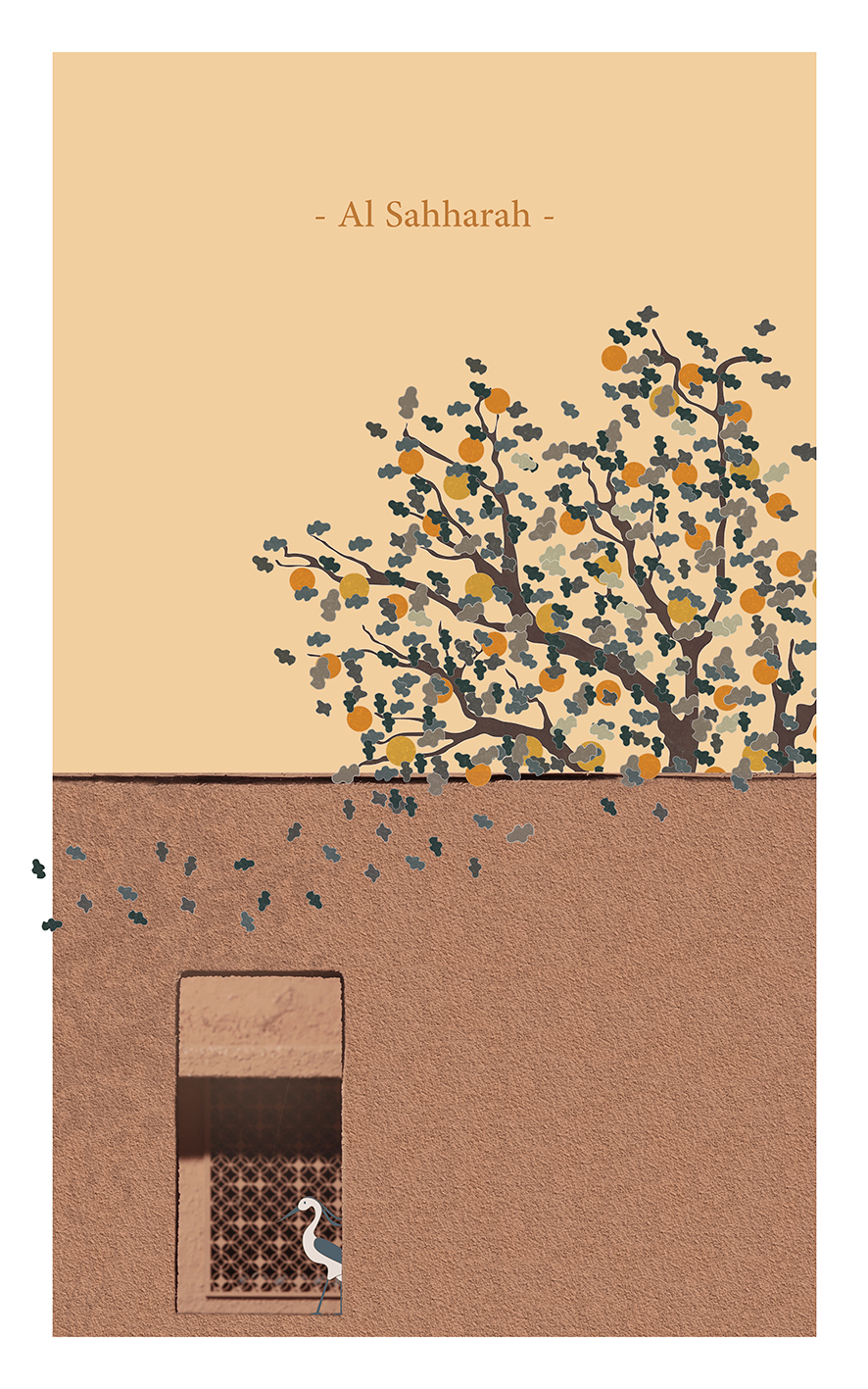In February 2011, Syria went to war and now, more than seven years later, the end seems to be far from over. The physical destruction of Syria is immense; cities, villages, infrastructures, water systems have been destroyed and internal and external financial resources are very limited.
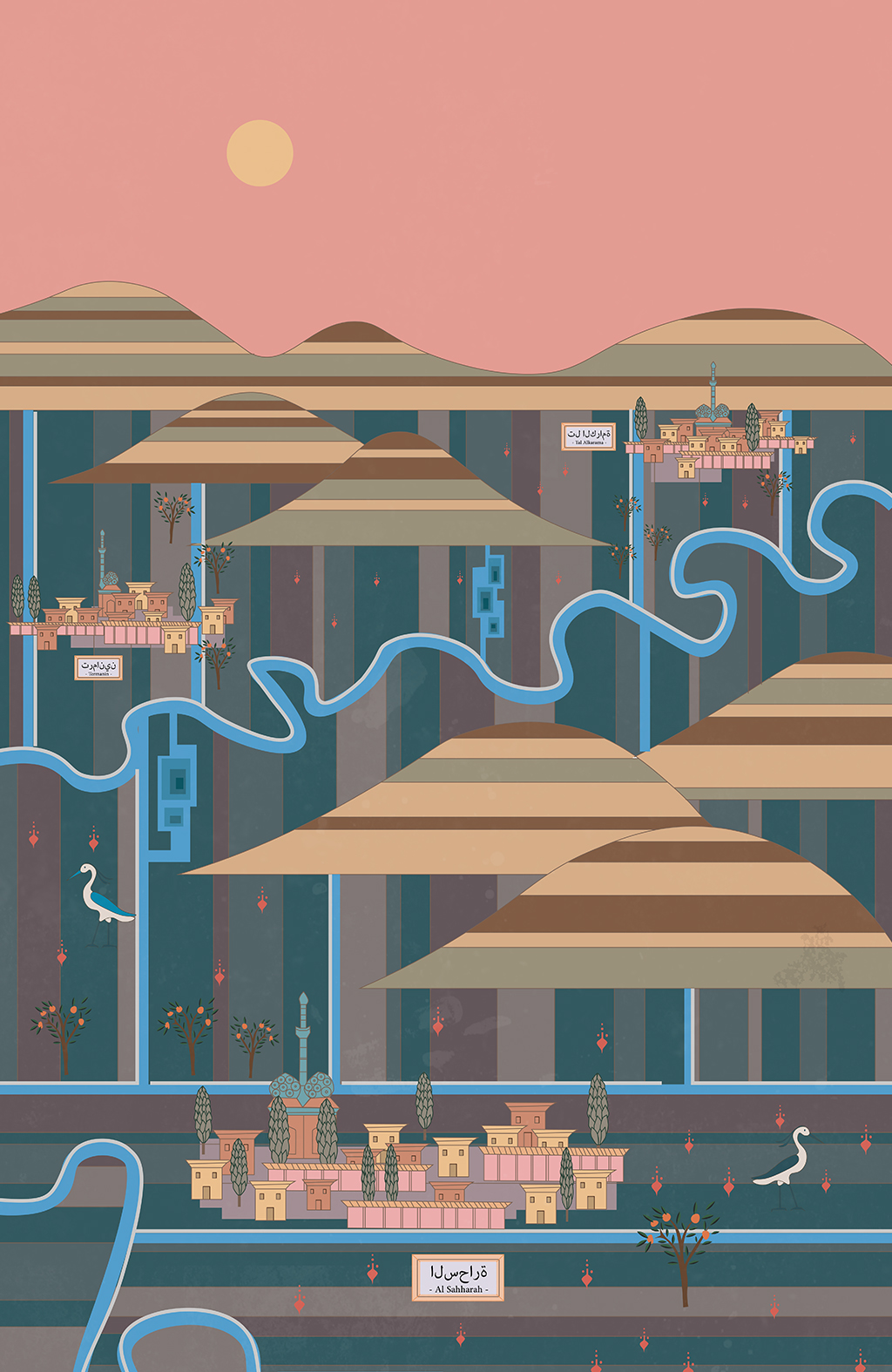
- How to imagine the near future of Syria - It has been chosen to act by applying a button-up strategy, a co-reconstruction of the country which starts from the small Syrian settlements. Throughout the Syrian territory it has been identified 560 villages with 2.500/10.000 inhabitants where it is possible to concentrate the urban fabric. That is an opportunity to rethink the Syria future through a territorial decentralization policy that brings into focus the sustainable territorial development of minor settlements. - Reconstruction can start from the right scale - The first step in rebuilding villages project is to define properties; the morphological structure of the traditional Arab city is preserved maintaining the pre-conflict ownership structures and reconstructing its limits. The boundaries are defined by a wall structure that contains the material of the previous buildings and collects technological infrastructure for territorial development.
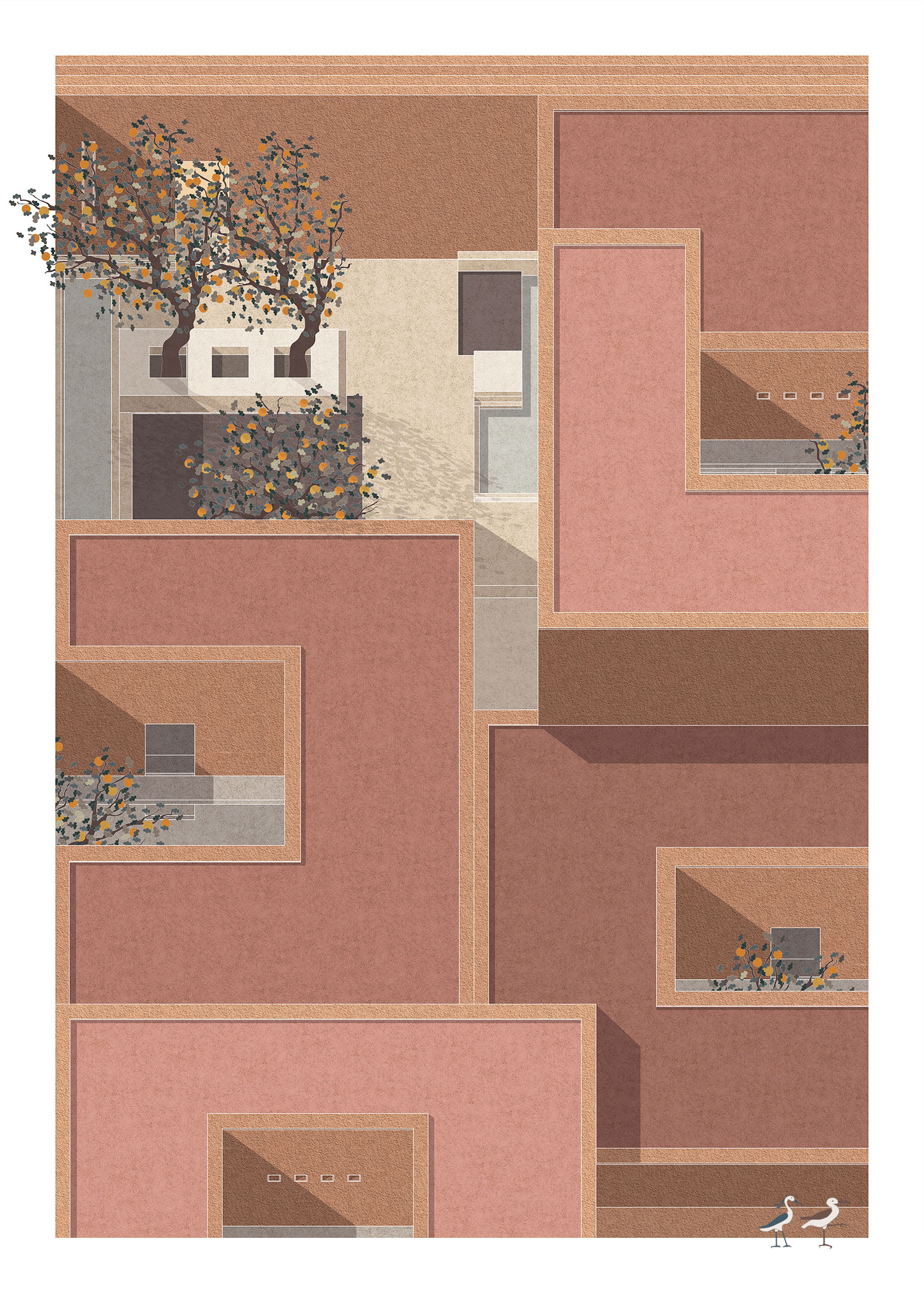
In Al Sahharah the reconstruction starts from a series of fragments of open spaces, private gardens, places of peace, waiting and hope. The garden takes a morpho-genetic role, determines the articulation of space within the ownership structure, attracts new buildings and is able to construct dense spaces, where density is not only measured in terms of the number of dwellings but also as potential interaction between the inhabitants. The principle of the garden will dominate the structure of the settlements which in turn will be able to spontaneously aggregate. The garden becomes an element of densification and at the same time it allows maximum flexibility. The landowner can choose to rebuild his house or more densify the plot by exploiting the water and electricity services offered by the existing infrastructure. In fact, the garden, in close relation with the enclosure, carefully manages the rainwater resource, collecting, filtering and directing it to the houses. As a type of dwelling, it was decided to include a courtyard house model able to match the traditional domestic characteristics to the new residential needs of the local population. That’s where the rebuilding and restocking of the village begins.
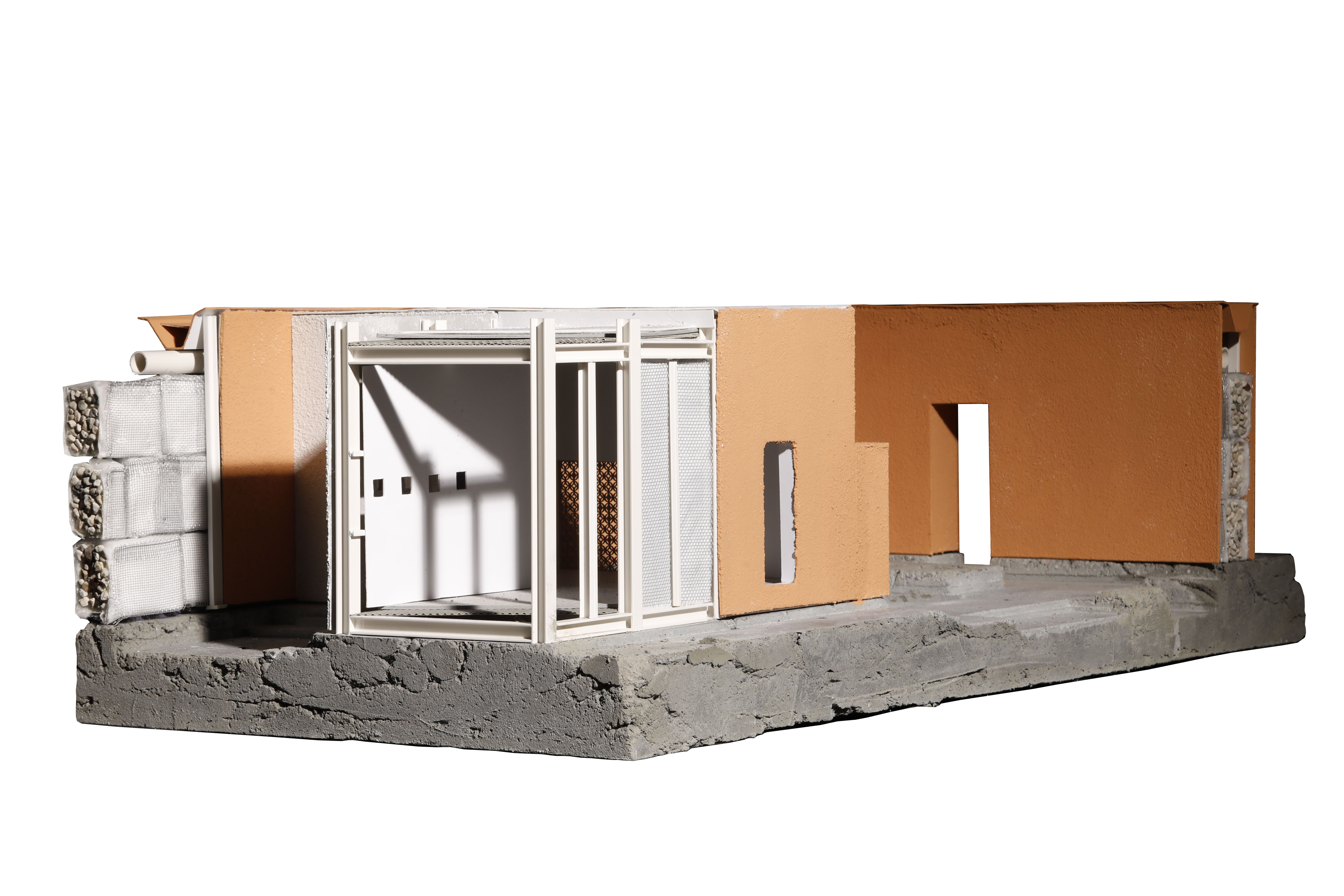
The Board:
